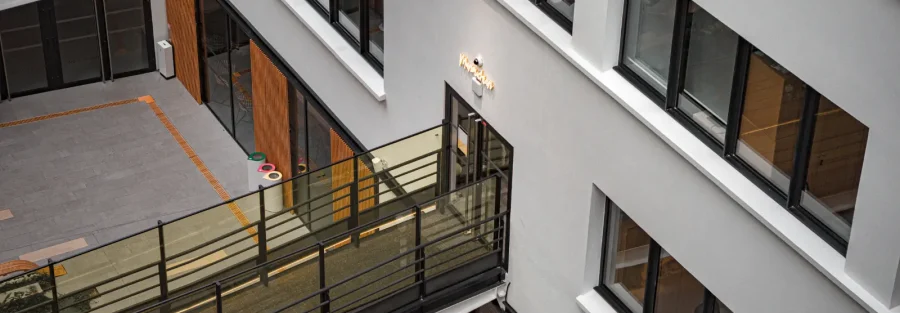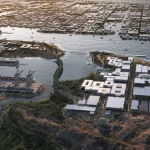Riyadh has been on an unprecedented rise. In just a few years, the Saudi capital transformed from a government seat into a global magnet for businesses, expats, and giga – projects.
But with its growth came soaring housing costs – rent prices in some districts jumped more than 30% since 2022.
Last month, the Saudi government stepped in with a bold move: a five – year rent freeze across Riyadh. The policy aims to stabilise housing affordability, curb speculation, and protect residents as the city prepares for its Vision 2030 growth phase.
The decision, though welcomed by tenants, has sent ripples across the real estate market, raising one big question: can you cool a boom without killing the momentum?
Why the Freeze Was Needed
The numbers tell the story. Riyadh’s population has been growing by roughly 3.5% annually, fuelled by new business relocations and public – sector expansion. Demand for quality housing far outpaced supply.
According to a Knight Frank report, rents in Riyadh rose 23% in 2024 alone, with prime apartments and villas seeing the sharpest increases. That made Riyadh one of the fastest – appreciating rental markets in the world.
For policymakers, the trend risked social tension and economic imbalance. High rents were starting to erode disposable incomes, make workforce mobility harder, and threaten the city’s attractiveness for new talent.
A Pause, Not a Pullback
Saudi officials have described the freeze as a “stabilisation measure,” not a rollback of investment momentum. It’s designed to prevent speculative pricing while giving developers time to catch up on new supply.
The Ministry of Municipal and Rural Affairs and Housing confirmed that the freeze will apply to both residential and commercial leases, with a review mechanism in place after five years.
In parallel, the government is fast – tracking new housing projects through National Housing Company (NHC) and incentivising public – private partnerships to deliver affordable units.
Market Reaction: Mixed, But Measured
Developers and landlords initially viewed the freeze with concern. Some investors fear that fixed rental income could discourage private development or reduce yields, particularly for mid – market housing.
However, analysts see a longer – term upside. Stabilised rents could help the market avoid volatility and speculation – making it more attractive for institutional investors seeking predictable returns.
As Colliers MENA noted in a September 2025 briefing, “The freeze could improve planning visibility for both landlords and developers, provided the pipeline of housing delivery remains strong.”
In other words, the rent cap may reshape – not stall – the Riyadh real estate boom.
The Bigger Vision Behind It
This policy move fits into a broader national narrative. Under Vision 2030, Saudi Arabia aims to raise home ownership to 70% by the end of the decade. That means shifting from an investor – led market to an end – user market.
Keeping rent inflation in check supports that goal by allowing residents to save more and eventually transition to ownership. It also aligns with the government’s “Quality of Life” program, which places affordable housing as a pillar of social stability.
The Risk of Supply Strain
The biggest test will be supply. Riyadh’s rapid population growth – driven by foreign investment, multinational relocations, and the expansion of PIF – backed projects – means housing demand will keep climbing.
If construction timelines slip or developers hold back due to capped rental returns, the city could face shortages within two to three years. That could push demand into surrounding areas or even create informal rent – premium arrangements to bypass the cap.
Policymakers will have to maintain a delicate balance: keeping prices stable while ensuring the private sector stays motivated to build.
Real Estate Investors Recalibrate
Foreign and domestic investors are already adjusting their strategies. Many are shifting focus from short – term rental yields to long – term capital appreciation and integrated community developments – mixed – use projects that generate steady income streams from retail, hospitality, and co – working spaces.
For institutional players, Riyadh remains a high – conviction market. With its role as the anchor city for Vision 2030 and billions in giga – project spending nearby (Diriyah, King Salman Park, Qiddiya), the fundamentals remain strong.
What It Means for Businesses and Residents
For residents, the freeze offers much – needed breathing room. For companies relocating to Riyadh, it improves cost predictability when housing staff. And for the government, it sends a signal of confidence – showing that growth can be managed, not just accelerated.
Still, the move challenges the old equation where property price inflation equalled prosperity. The new formula is stability equals sustainability.
Conclusion
Riyadh’s rent freeze is more than a reaction to rising prices – it’s a recalibration of growth. It marks a shift from runaway expansion to controlled sustainability, from speculation to structure.
If Saudi policymakers can maintain balance – encouraging new development while keeping costs fair – the freeze could set a precedent for other fast – growing Gulf cities facing the same dilemma.
Because in the end, keeping a city livable may be the smartest way to keep it growing.





